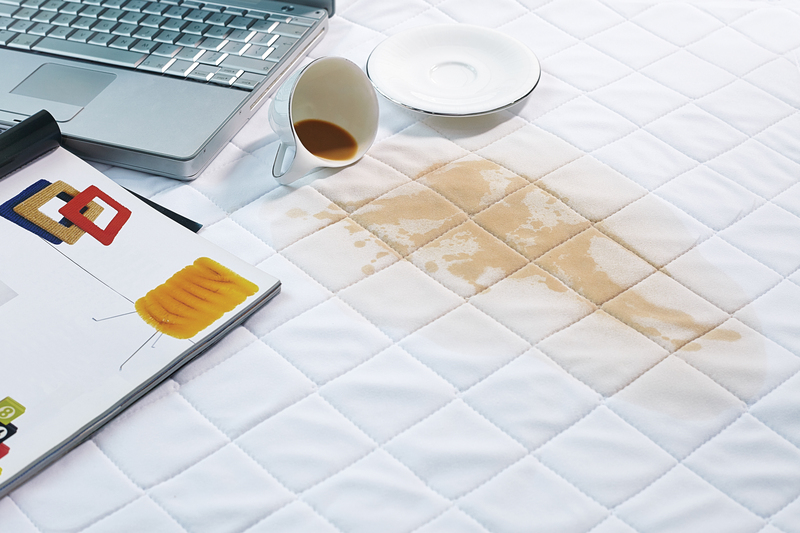Best practices for rotating and flipping your mattress for maximum longevity
Posted on 24/07/2024
As we spend around one-third of our lives sleeping, it's no surprise that investing in a good quality mattress is essential. A comfortable and supportive mattress can greatly improve the quality of our sleep and overall health. However, many of us overlook an important aspect of mattress care - rotating and flipping. These routine maintenance practices can significantly extend the life of your mattress, saving you money in the long run. In this article, we will discuss the best practices for rotating and flipping your mattress for maximum longevity.
Why Rotate and Flip Your Mattress?
Before we dive into the best practices, let's understand why it's necessary to rotate and flip your mattress regularly. Over time, mattresses tend to develop body impressions or sinkage due to the constant pressure applied by our bodies while sleeping. This can lead to uneven support and discomfort, affecting our sleep quality. By rotating and flipping your mattress, you distribute the weight evenly, preventing any one area from bearing all the weight. This helps maintain the structural integrity of the mattress, ensuring it stays firm and supportive for a longer period.

How Often Should You Rotate and Flip Your Mattress?
The frequency of rotation and flipping depends on the type of mattress you have. Here are some general guidelines to follow:
- Traditional innerspring mattresses: It is recommended to rotate these mattresses every three months and flip them twice a year.
- Memory foam mattresses: These should be rotated every six months but should never be flipped as they only have one usable side.
- Hybrid mattresses: Follow the same rotation schedule as innerspring mattresses, but you can also consider flipping them once a year for even wear.
It's important to check with the manufacturer's recommendations for your specific mattress as some may require different schedules.
The Process of Rotating and Flipping
1. Clear out your bedroom: Before starting the rotation and flipping process, remove all bedding, including sheets, pillows, and blankets from your mattress.
2. Rotate: For traditional innerspring and hybrid mattresses, rotate them 180 degrees. This means the head of the mattress becomes the foot. If you have a queen or king size bed, get some help as these mattresses can be heavy.
3. Flip: Next, flip your mattress over so that the bottom becomes the top. Be careful during this step as it may be challenging to maneuver a heavier mattress.
4. Clean: Take the opportunity to clean your mattress while it's flipped. Vacuum any dust or debris that may have accumulated on the underside.
5. Repeat: Follow this process every three months for innerspring and hybrid mattresses, and every six months for memory foam mattresses.
Tips for Maintaining Your Mattress
- Protect your mattress from spills and stains by using a waterproof mattress protector.
- Avoid jumping on your mattress as it can damage the springs and cause sagging.
- Remove any excess clutter or weight from your bed to prevent unnecessary pressure on the mattress.
- Keep pets off the bed as their nails can puncture and damage the fabric.
- Consider rotating and flipping while changing your bed linens to make it a routine practice.
The Pros and Cons of Rotating and Flipping
Pros:
1. Prolongs the lifespan of your mattress: Regularly rotating and flipping your mattress can add years to its life, saving you money in replacement costs.
2. Improves sleep quality: A well-maintained mattress provides better support for your body, ensuring a more comfortable sleep.
3. Prevents uneven wear: By distributing weight evenly, you avoid developing body impressions or sinkage on one side of the mattress.
4. Keeps allergies at bay: Cleaning your mattress while rotating and flipping helps eliminate dust mites and allergens that may be lurking on the surface.
Cons:
1. Memory foam mattresses can only be rotated, not flipped, which may result in uneven wear over time.
2. Rotating and flipping can be a physically demanding task, especially for larger mattresses.

Takeaways
Rotating and flipping your mattress is an important maintenance practice that should not be overlooked. Not only does it improve the longevity of your mattress, but it also enhances your sleep quality and keeps allergens at bay. Remember to follow the recommended schedule for your specific type of mattress and take proper precautions while rotating and flipping to avoid any strain or damage.
In Conclusion
Investing in a good quality mattress is just the first step towards getting a good night's sleep. To ensure your mattress stays in top condition for years to come, make sure to rotate and flip it regularly. By following the best practices discussed in this article, you can prolong the life of your mattress, improve your sleep quality, and save money in the long run. Don't neglect this essential aspect of mattress care - your body will thank you for it!





